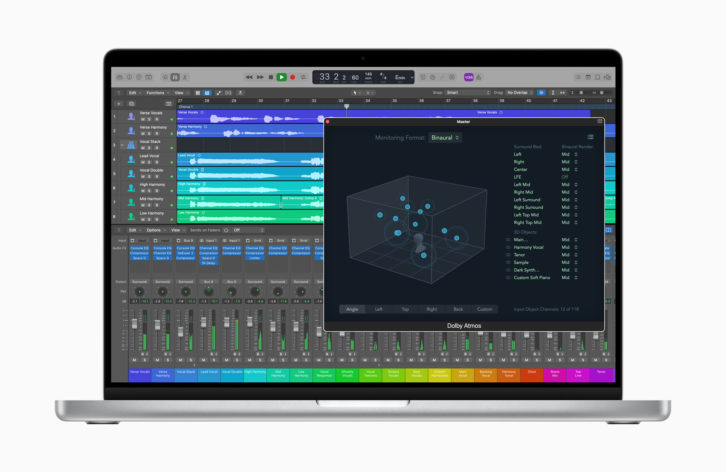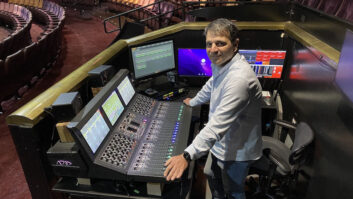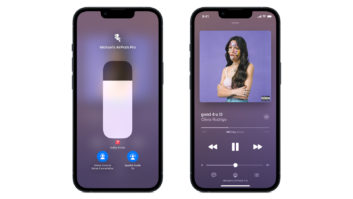 I know, I know. It’s just a headline. Apple never left the music and recording industries. Heck, according to the most recent report from MIDiA Research, Apple Music is second in worldwide market share for streaming music subscription services at 16 percent and rising, trailing only Spotify at 35 percent and slipping, and well ahead of Amazon, Tencent, Google and the rest.
I know, I know. It’s just a headline. Apple never left the music and recording industries. Heck, according to the most recent report from MIDiA Research, Apple Music is second in worldwide market share for streaming music subscription services at 16 percent and rising, trailing only Spotify at 35 percent and slipping, and well ahead of Amazon, Tencent, Google and the rest.
So why is it that for the past five to 10 years, up until the Big September Event to announce the launch of Apple Spatial Audio and the availability of Dolby Atmos Music tracks—along with binaural delivery, lossless coding, dynamic headtracking in AirPods Max and an updated version of Logic Pro X with integrated Atmos toolset, all running on new 14- and 16-inch MacBook Pro laptops with new, much more powerful Apple Silicon M1 chips—it sort of felt like Apple hadn’t been paying that much attention to music?
Maybe it’s just me. Maybe I take the ease of the whole MacBook-iPadiPhone triumvirate for granted. I have PC and Android friends, but I’m a Mac guy, and I have been since 1989 when Mix editors and graphic artists each got a Mac IIcx, while the sales and production teams got PCs. Macs were for creatives, we proclaimed! Since 2001, iTunes, and now Apple Music, have simply been a part of life.
It’s hard to explain to someone under 30 just how dominant Apple was in the sales, distribution and playback of music in the first decade of the 2000s. When Steve Jobs announced the launch of iTunes in January 2001, MP3 had been accepted as a file delivery format, and Napster, Limewire and other illegal peer-to-peer services were at their height. Eight months later, Jobs took the stage again, this time to debut the iPod. In 2003, Apple opened the iTunes Store, forefather of today’s App Store.
Apple Launches Logic Pro 10.7, Adding Dolby Atmos Mixing, Producer Packs and Updated Plug-Ins
That combination of the iTunes app to accept payment, download the music file, manage the song library and playlists, then burn to a CD-R drive and/or Export to an iPod, changed everything about the way we purchase, disseminate and listen to music. Yes, there were portable digital players before the iPod and there were download services before iTunes, but they weren’t too consumer-friendly and they hadn’t captured the imagination of the public. Apple made portable digital music simple, convenient and cool.
Apple also made a lot of money. There hadn’t been anything like the iPod since Sony introduced the Walkman in the 1970s, ushering in the age of personalized portable music on cassette. Then again, Sony only produced the hardware. By 2005, Apple had its own delivery spec for the music mastering community, Mastered For iTunes, with its own acronym: MFiT. Apple owned (most of) the 99-cent download, the computer, the OS, the app and the playback device. And this is all pre-mobile! Pre-AirPod!
Then the iPhone came out in 2007, the iPad in 2010 and the rise of streaming audio followed soon after. We heard a lot about Pandora first, then Spotify, later on Amazon and TIDAL, with Soundcloud, Bandcamp and others dancing around the edges from the beginning. Apple had streaming music, of course, but admittedly was focused more on adding video and other types of streaming media at the time. iTunes was getting overloaded to the point that the company split it into three apps in 2019: TV, Podcasts and Music.
This brief (though it seems more long-winded as I read it back) synopsis on the launch of iTunes and the iPod has a point: I feel that 20 years later, here at the close of 2021, we are at a similar tipping point in the delivery of music. Then in one day, Apple announced the availability of the Spatial Audio delivery platform, thousands of Dolby Atmos Music tracks, Hi-Res and Lossless compression options, and third-gen AirPods that feature dynamic headtracking.
This time, however, Apple added something for the creatives, those who will be delivering the Atmos mixes, with the simultaneous launch of the stupid-fast M1 chip-driven MacBook Pro and a 10.7 update to Logic Pro X that includes the complete Dolby Atmos toolset. The cost of entry for Dolby Atmos Music production just plummeted, and that’s a good thing.
Of course, as Pink Sweats and Manny Marroquin point out in Steve Harvey’s excellent cover story for our December issue on all things Apple Spatial, a laptop and headphones can get you 80 percent there, like a rough, with the artist setting up his or her vision. Then finish in a pro, treated room with a tuned, certified 7.1.4 monitoring system. Much like how films are mixed. People will still buy speakers.
For Apple, it’s all about getting the artists involved with spatial audio from the beginning of the creative process—playing with it, experimenting with it, learning about it. The more that the creative side gets involved, the more immersive music becomes available to consumers, and soon it becomes normal. That’s how change takes place: Supply feeds demand same as demand feeds supply.
A lot of good people have been working for years on developing tools and techniques for immersive music production, including Dolby, Capitol Studios, UMG and PMC. But when I see a 30-second commercial during the World Series with Justin Bieber touting the experience of listening to his own song in Atmos, I think, Sometimes it takes a company like Apple to tip things over the edge.







